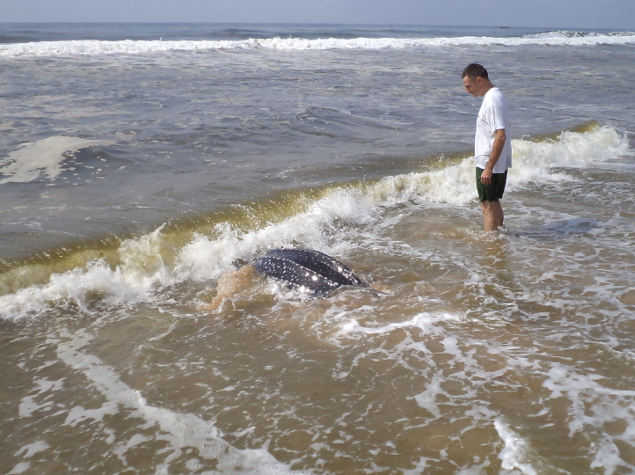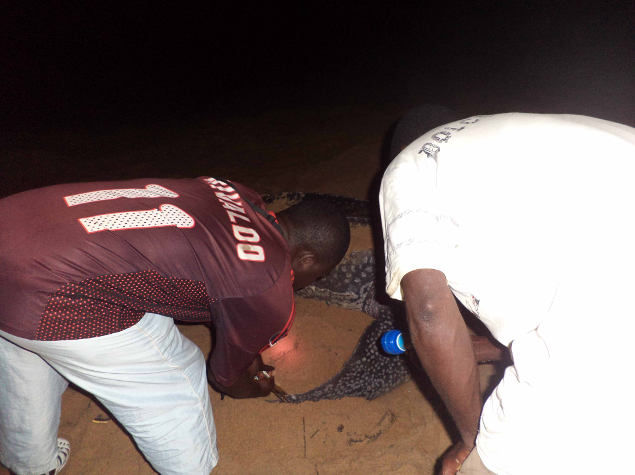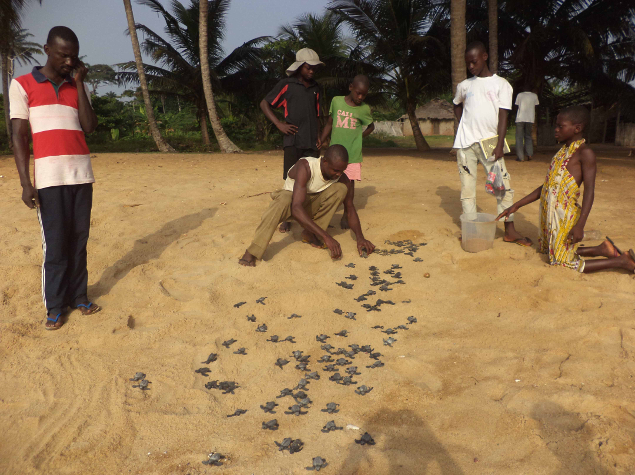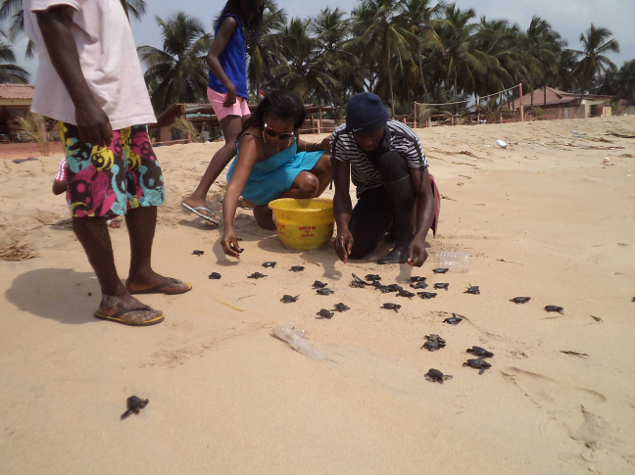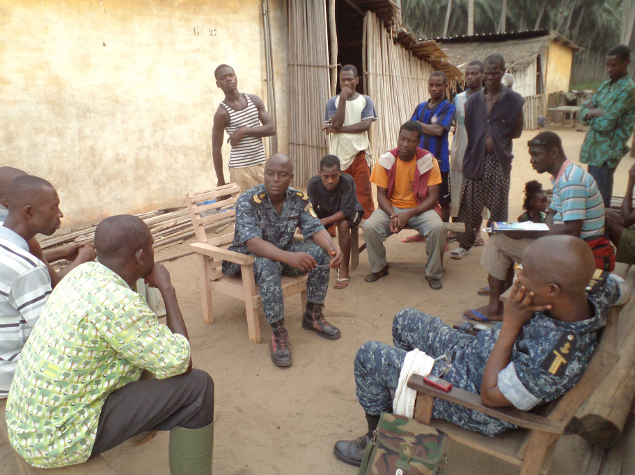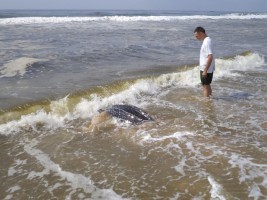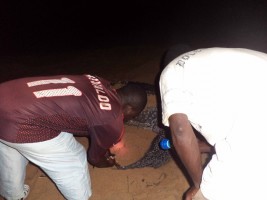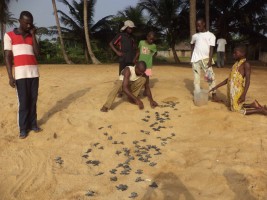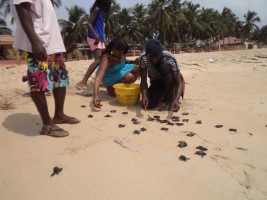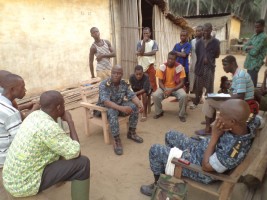Conservation of sea turtles in Côte d’Ivoire
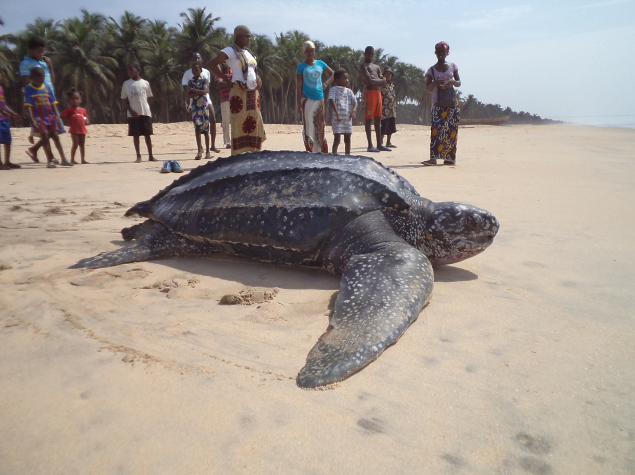
Since 2010, SOS Dassioko has been running a project to protect sea turtles at Mani beach in south-western Côte d’Ivoire. This initiative has put a virtual end to poaching in the area. The objective now is to build on these achievements and extend the protected area to the neighboring beaches of Pitiké and Kablaké.
The whole protected area, which stretches for 24 kilometers, is the most important sea turtle nesting beach in Côte d’Ivoire. From September to March, various species of marine turtles such as the leatherback (Dermochelys coriacea) and hawksbill (Eretmochelys imbricata), both classified as critically endangered species on the IUCN red list), the green turtle (Chelonia mydas), classified as endangered, and the olive ridley (Lepidochelys olivacea), classified as vulnerable, come to lay their eggs on these beaches. It is planned that a total of around 1000 female turtles and their nests will be protected and that 50 000 hatchlings will be released into the sea. Without such protection and conservation initiatives, it is estimated that over 90% of the eggs would disappear and that the female turtles would be killed by poachers for their meat.
Within the scope of the project, further initiatives will be conducted, such as the establishment of a water supply system, the distribution of solar lamps and the development of ecotourism in the region.
The objectives of this project are therefore:
-
To conserve sea turtles and their habitat
Protection committees will be set up in each target village to monitor the turtles, their nests and the hatchlings. These committees will be made up of 15 young people in total, mostly former turtle hunters, who will be in charge of biomonitoring during the egg-laying months and will receive tourism training. A night monitoring system will also be introduced in partnership with the maritime police in Grand Béréby (sub-prefecture of the area).
Similarly, fishing boats will be monitored to ensure the release of turtles accidentally caught in their nets, with the fishers being given netting twine if their nets are damaged. Most of the time, the nests will be protected on the beaches and the tracks left by the turtles erased. Two hatcheries will also be built for transfer of the nests at greatest risk. A customary law on turtle protection will be ratified and enforced by the authorities, the village leaders having enough authority to ensure proper observance. Outreach activities will increase local community awareness of this law and of biodiversity protection in the project area: film screenings, distribution of posters and the installation of information panels.
Finally, there will be an information exchange with similar projects in America.
-
To enhance the ecotourism potential of the project sites
The association plans to set up a local management committee for ecotourism activities. It intends to develop the ecotourism economy by organizing guided tours of the beach. Visits to the nesting sites will be led by the 15 young people recruited as part of the project. The two hatcheries will also be accessible to vacationers, and the hatching of the baby turtles will be carried out in public. In addition, agreements are expected to be signed with local hotel owners and tourist offices. The profits will be reinvested in the project.
-
To improve the living conditions of the local population within the protected area
The residents of Mani (population 1500) will benefit from the construction of a solar-powered drinking water supply system and a water tower. Solar lamps will be distributed to households in Pitiké and Kablaké (1300 people in total), enabling wood-cutting and oil consumption to be reduced. These initiatives should lead to greater local community acceptance of the overall project.
Final summary report (May 2017)
During the period supported by Fondation Ensemble, SOS Dassioko led various activities:
- 30 km coast supervision by young villagers. The NGO estimates that 1200 turtles and their nests have been protected during two nesting seasons (September to March).
- Construction of two hatcheries. Tourists are invited to visit it and to take part of the releases.
- Passing of a customary law to protect marine turtles and improvement of the Maritime Police technical capacity. Thus, turtle poaching stopped as well as egg sales in the close villages.
- Installation of one drinking water supply and two communal structures using solar energy.
18 jobs, mainly for young villagers, have been created. Now, SOS Dassioko works toward the creation of a natural reserve and a marine protected area. A more global project to protect turtles in Sierra Leone, Liberia and Côte d’Ivoire is under study.
Check out information on this project’s phase 2 here.

